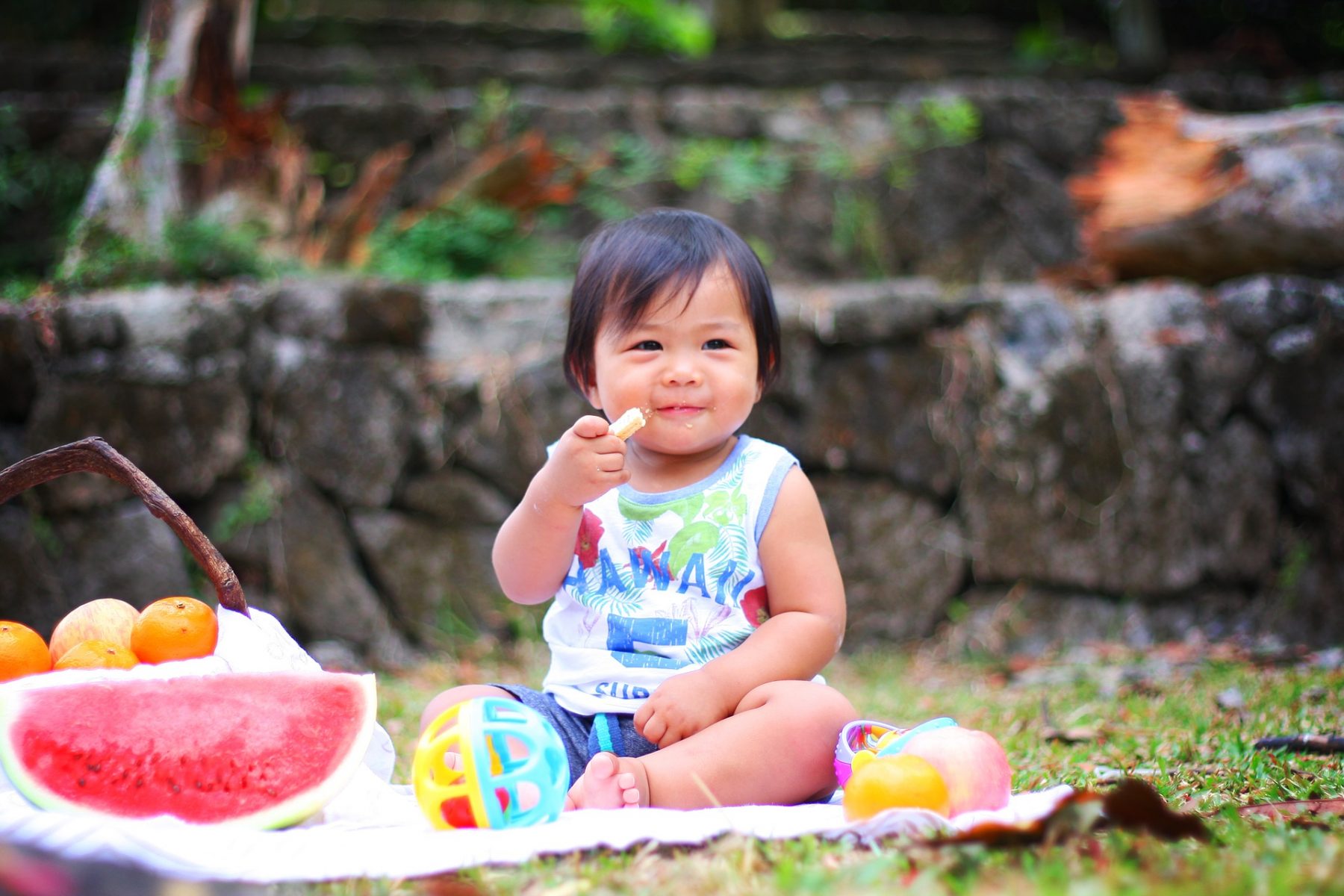Puréed baby food is out and baby-led weaning, or BLW, is in. BLW allows for babies to feed themselves solid finger foods rather than being spoon-fed purées by parents. BLW provides a number of benefits for the child in the future. This method puts the baby in the driver’s seat of tending to their hunger and exploring foods with both tastes and textures. It also practices their motor skills for eating solid food, as opposed to being spoon-fed.
The Benefits of Baby-Led Weaning
Genevieve Howland at Mama Natural wrote that BLW allows the baby to develop the ability to self-regulate, self-select and experiment with healthy foods. By eating for themselves, babies control the amount they eat, which fine-tunes their ability to stop eating when they are full, thus protecting the baby from overeating and excess weight gain.
My sister-in-law introduced my family to baby-led weaning at Thanksgiving. She and my brother set up their daughter’s space for eating — a high chair, bib and protective layers for the baby and the floor. They put little bits of our Thanksgiving meal on her tray, like pieces of turkey and pumpkin pie. One by one, the baby smashed pieces of food into her mouth; we amusingly watched her make a collage of food on her face as she fed herself.
Baby-led weaning is popular in the U.K. and New Zealand, and it’s slowly becoming more popular in the U.S. It is a supplement while breastfeeding or formula feeding, which should still make up the majority of the baby’s diet while starting BLW. The World Health Organization (WHO) suggested that children should breastfeed, if able, “for up to 2 years and beyond” alongside other foods.
Howland further wrote, “Experts agree that solids should be delayed until the middle of the first year of life. This is when baby’s digestive system is mature. Some babies may seem ready at 5 ½ months, while others may not be ready until 8 months of age.” Another factor indicating a baby is developmentally ready is the ability to sit upright, adequate head control and, of course, the ability to grasp food in their hands.
The term “baby-led weaning” came from midwife and nurse Gill Rapley, who is also credited for popularizing the feeding method through her book, “Baby-Led Weaning: The Essential Guide to Introducing Solid Foods and Helping Your Baby to Grow Up a Happy and Confident Eater.”
The first food for the baby should be soft. Popular first foods include bananas, avocados or cooked pasta. Basically, as long as your fingers can squish the food, it can be fed to the baby. Foods that should not be fed to the baby include honey, cow’s milk, processed foods or foods with a large amount of salt or sugar.
Sarah Bushell from The Children’s Nutritionist warned prospective parents planning to do BLW that “Baby led weaners tend to consume more salt and sugar than traditional weaners (puree fed babies)” and to “be aware of this and take steps when cooking to minimize the amount of salt and sugar.”
The Disadvantages and Dangers of Baby-Led Weaning
One of the main problems regarding BLW is the fear of the baby choking. BLW requires the full attention of the baby’s parents as they eat. Babies can gag easily, and one of the troubling parts of them feeding themselves is knowing if they are gagging or choking on the food. They are born with a sensitive gag reflex, and as they grow, it moves further back in their mouths, allowing them to eat more solid foods. There still remains a chance the baby will gag on food regardless of maturity, so parental guidance at the table is necessary.
Nevertheless, Bushell disclaimed, “Much of the research into baby led weaning has not shown an increased risk of choking with BLW, compared to being weaned with purees.”
Another disadvantage to BLW rather than spoon-feeding purées is the absolute mess babies make when exploring their foods. Those around the baby should arm themselves and the baby with protective aprons and bibs, and be aware that the floor and high chair will be covered in food by the time the baby has finished eating.
It is important to note that not all babies will positively react to baby-led weaning. In a post to NaturalBirthandBabyCare.com, Kristen wrote about her experience with BLW and how it did not work for her and her children due to sensory issues. A few of her children didn’t like anything solid in their mouths due to an overactive gag reflex, and her first baby with sensory issues became underweight, so she changed back to purées for a while before moving to solid foods.
Kristen mentioned that her future babies will begin on purées to combat any future complications. She also wrote, “‘Starting solids’ has been an interesting part of my mothering journey, and like so many things have required flexibility and reconsideration — but I’m happy with the balance we’ve found.”
Sonya Cameron, Anne-Louise Heath and Rachael Taylor wrote in their research, “Baby-Led Weaning requires teamwork from the parent (to offer healthy and appropriate foods) and from the infant (to self-feed).” They also described why parents choose BLW. “They perceive that it provides a range of potential benefits, including being a healthier, less expensive way of introducing complementary food, which they perceive the baby enjoys more,” they explained.
When the baby reaches the age to eat complementary foods, they become fascinated by foods enjoyed by their family, typically reaching for the food and making chewing motions. I saw this in my seven-month-old niece as she stared wide-eyed and attentive at her mom as we ate our dinner. Because of these behaviors, it is perceived that the child enjoys it more, although there is no concrete research supporting it. But it does give the baby a chance to eat with the family, rather than having to feed them separately.

















